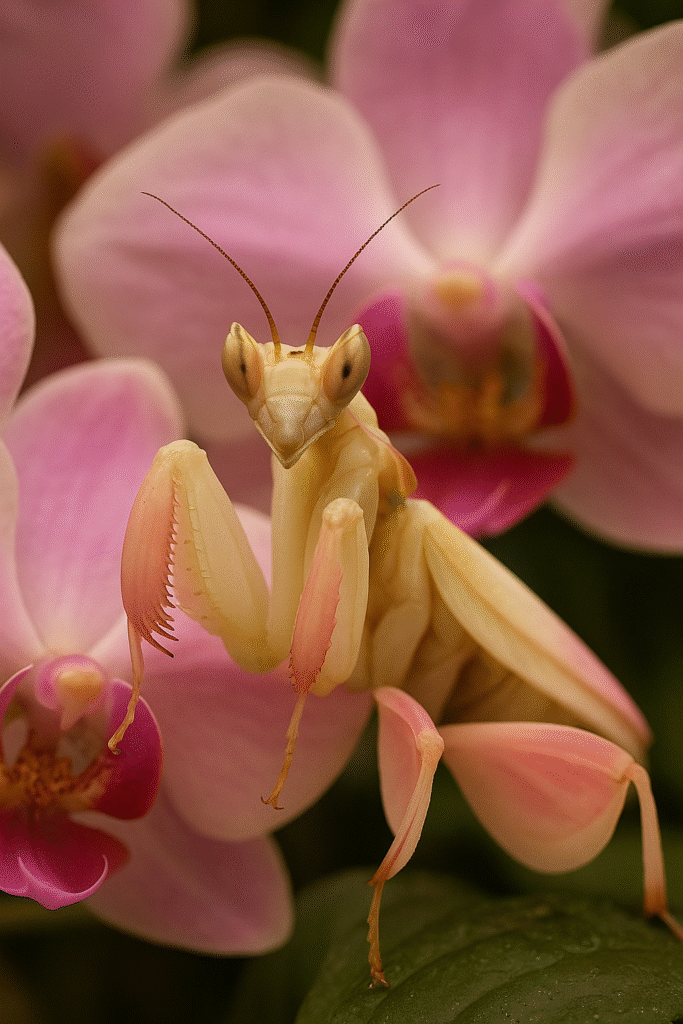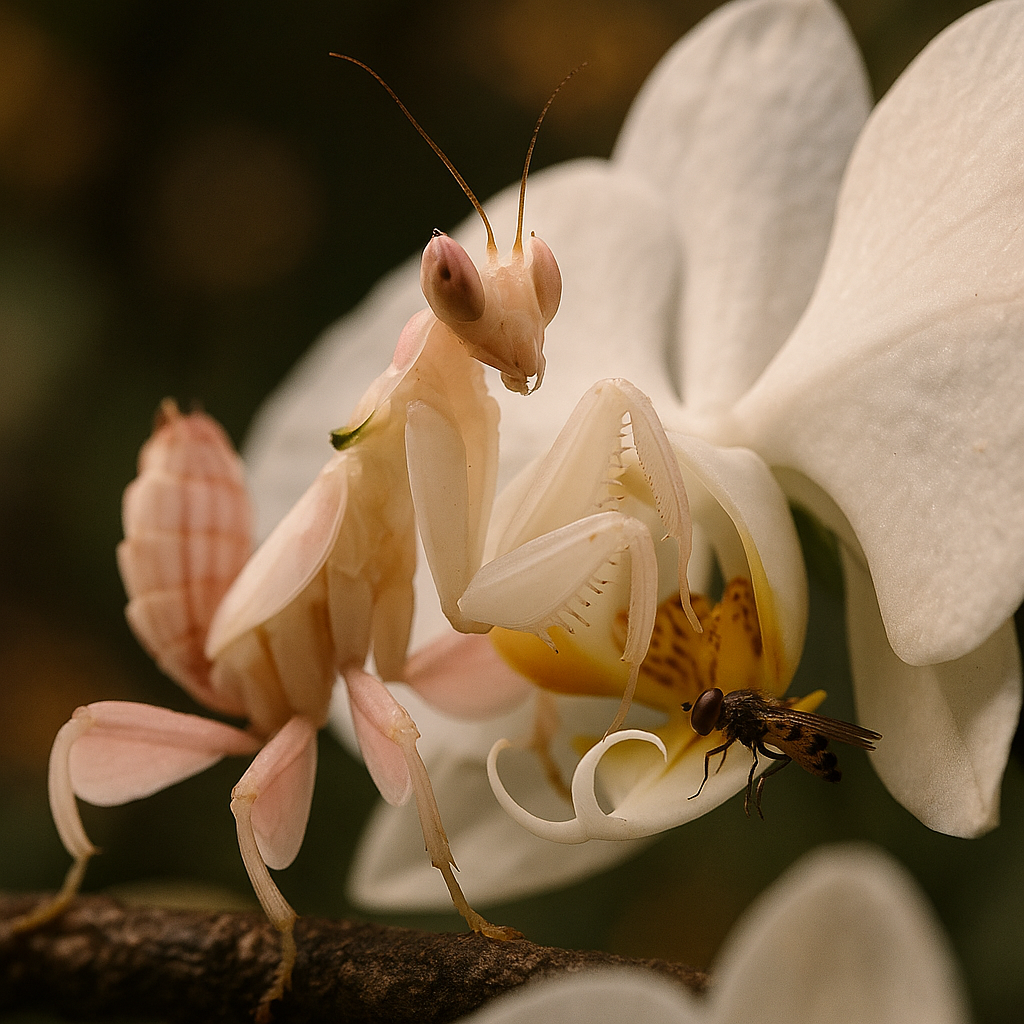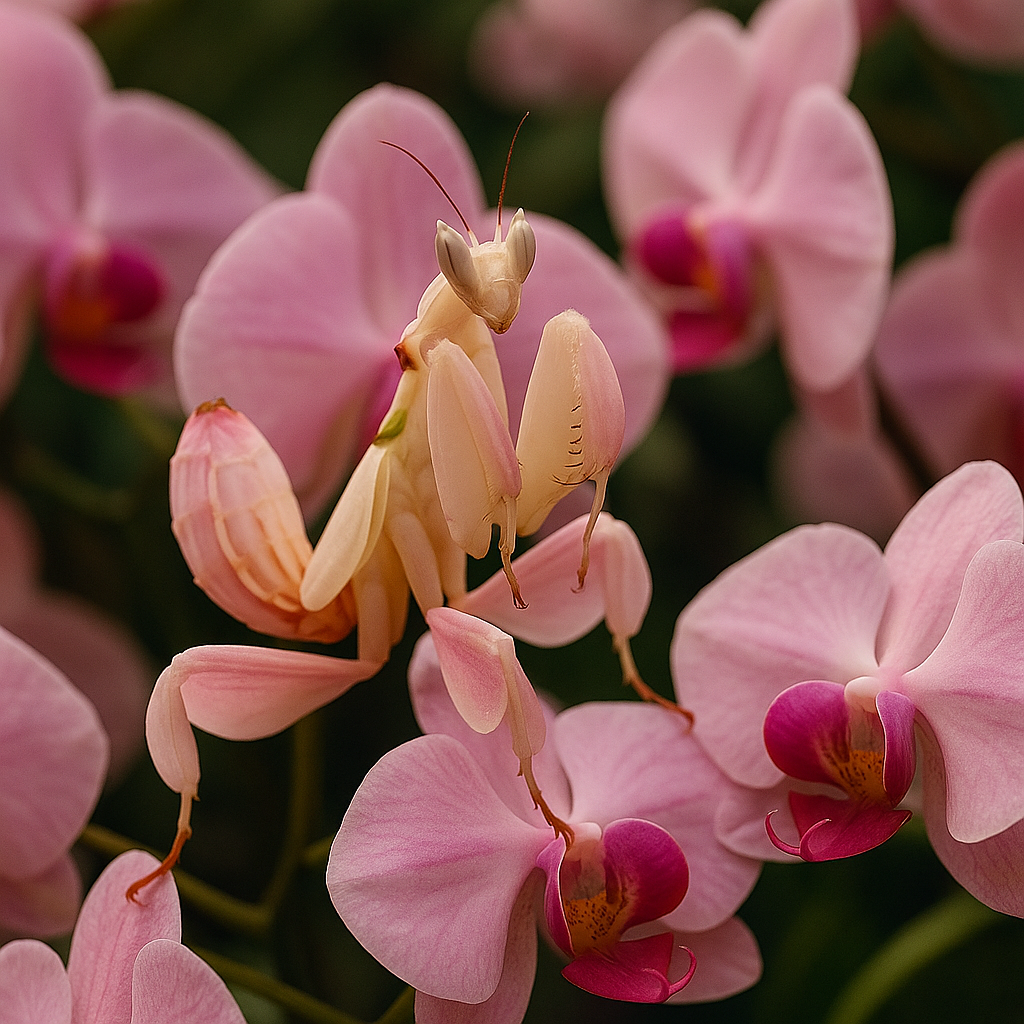In the tropical forests of Southeast Asia, where orchids bloom in colors so vivid they seem painted by hand, lives a predator that embodies both elegance and illusion. The Orchid Mantis (Hymenopus coronatus) is a creature that blurs the line between flower and insect, a living masquerade whose beauty is as lethal as it is fragile.

To see one for the first time is to doubt your eyes. Perched among blossoms, its body mirrors the delicate pink and white of orchid petals, its limbs flaring outward like petals themselves. Unlike camouflage that merely conceals, the Orchid Mantis lures. Pollinators drawn by the promise of nectar approach, only to be seized by jaws that snap shut faster than a blink.
A Predator Disguised as a Flower
The Orchid Mantis’s strategy is not just concealment but attraction. Studies have shown that it is more alluring to pollinators than the very flowers it imitates. Bees and butterflies, deceived by its petal-like limbs, drift toward it—and become prey. In this way, the mantis transcends simple survival tactics: it becomes both predator and blossom, hunter and art.
Its deception extends beyond sight. When it sways in the humid breeze, it does so with the rhythm of orchid petals caught in wind. Each motion is mimicry elevated to performance—a deadly theater staged in silence.
Symbolism in Myth and Culture
Throughout history, mantises have been symbols of patience and divine stillness. In parts of Asia, the Orchid Mantis’s flowerlike disguise has fed stories of spirits cloaked in blossoms, messengers between the earthly and the divine. Its beauty, at once natural and otherworldly, places it at the intersection of reverence and fear.

Artists and poets have drawn from it for centuries, likening its delicate frame to the paradox of existence: fragility masking power, beauty masking death. The Orchid Mantis is not a flower, yet it thrives by being seen as one—a metaphor for illusion itself.
Fragility in a Changing World
For all its artistry, the Orchid Mantis is deeply vulnerable. Found mainly in Malaysia, Indonesia, and surrounding regions, it relies on dwindling tropical habitats. Deforestation and climate change threaten not only its survival but the orchids it mimics, unraveling a delicate balance honed by millions of years of evolution.
Its life is short, often just months, its beauty fleeting. Yet in that time it achieves something rare: it rewrites the rules of survival. Where other predators pursue strength or speed, the Orchid Mantis thrives through deception—proving that in nature, the greatest weapon can be illusion itself.
The Lesson of the Blossom Predator
In the Orchid Mantis we see nature’s paradox distilled: a predator cloaked as a flower, fragility masking ferocity, illusion as survival. It reminds us that the wild is not only a battlefield of tooth and claw but also a gallery of artistry, where survival is painted in strokes of color, patience, and disguise.

As long as the rainforests stand, the Orchid Mantis will continue its silent performance—half petal, half predator—waiting for those who mistake beauty for safety.


Reply